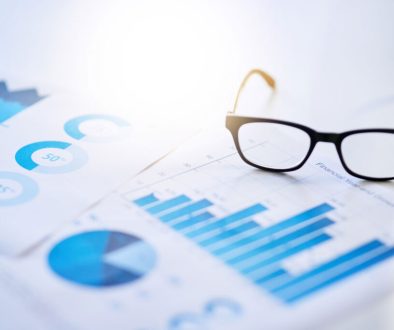How to Evaluate Equipment Value in an Asset Sale
How to Evaluate Equipment Value in an Asset Sale
Learn how to accurately assess equipment value during an asset sale. This guide offers strategies, methods, and expert insights for effective valuation.
Introduction
Evaluating equipment value in an asset sale is a critical step that can determine the success of the transaction. Whether you are a buyer or a seller, understanding how to appraise the worth of equipment is essential in making informed decisions. Equipment valuation impacts not only pricing negotiations but also influences financing options and capital allocation. This comprehensive guide will explore various methods for evaluating equipment value, the importance of accurate assessments, and key factors to consider during the evaluation process.
Understanding Equipment Valuation Methods
- The first crucial aspect of assessing equipment value is understanding the various valuation methods available. There are three primary approaches: cost approach, market approach, and income approach.
- Cost Approach: This method calculates the value based on the cost to replace the equipment minus depreciation. It is especially useful for newer equipment where replacement costs are relatively easy to determine.
- Market Approach: This technique involves analyzing the sale prices of similar equipment in the market. It’s essential to have access to current market data to ensure that the comparisons are relevant and accurately reflect current conditions.
- Income Approach: This method evaluates the value of the equipment based on the income it generates. This is particularly useful for specialized equipment that produces revenue, allowing for a more comprehensive understanding of its value.
- Understanding these methods helps parties involved in a sale to negotiate from an informed standpoint. For instance, a seller using the cost approach might overvalue equipment that has depreciated significantly, while a buyer may rely on the market approach to justify a lower price.
Factors Affecting Equipment Value
- The next critical point is recognizing the factors that can influence equipment value. These can include:
- Age and Condition: Older equipment generally has lower value due to wear and tear. Maintaining equipment in good condition can help retain its value. Regular servicing and upgrades can prolong its life and improve its resale value.
- Technological Advancements: The pace of technological change can diminish the value of older equipment. Buyers are often looking for state-of-the-art technologies that enhance efficiency and productivity.
- Market Demand: Fluctuations in market demand can lead to significant changes in equipment value. Understanding market trends and potential future demand can provide insights into pricing strategies.
- A thorough evaluation of these factors will enable buyers and sellers to present their cases more effectively during negotiations. For example, if a seller can demonstrate that their equipment has been well-maintained and updated, they can justify a higher asking price.
The Role of Appraisals in Equipment Valuation
- Another pivotal aspect of equipment value evaluation is the role of professional appraisals. Hiring a certified appraiser can provide an unbiased assessment that takes into account all relevant factors and methodologies.
- Benefits of Professional Appraisals:
- Objective Assessment: Appraisers offer a third-party perspective, which can eliminate bias from either party.
- Expertise and Experience: Professional appraisers possess specialized knowledge and experience in valuing specific types of equipment.
- Credibility: A professional appraisal adds credibility to the valuation, which can be essential in negotiations.
- Choosing the Right Appraiser:
- Selecting an appraiser with experience in the specific type of equipment being evaluated is crucial. Ensure that they are certified and have a solid reputation in the industry.
- By incorporating professional appraisals into the evaluation process, both buyers and sellers can achieve a more accurate and fair valuation, leading to smoother transactions.
Best Practices for Equipment Valuation
- Understanding best practices can make the equipment valuation process more efficient and effective. Here are some key strategies:
- Maintain Detailed Records: Keeping comprehensive records of equipment purchase dates, maintenance history, and upgrades is vital. This documentation can substantiate valuation claims and provide insight into the equipment’s longevity and reliability.
- Utilize Multiple Valuation Methods: Relying on a single valuation method can lead to inaccuracies. By employing multiple methods, parties can cross-validate results and achieve a more reliable final valuation.
- Stay Updated on Market Trends: Regularly researching market conditions and equipment value trends will ensure that your assessments remain current and relevant. This proactive approach helps anticipate shifts in value due to market dynamics.
- Implementing these best practices will not only enhance the integrity of the valuation but also build trust between buyers and sellers, ultimately leading to more successful asset sales.
Potential Pitfalls in Equipment Valuation
- While equipment valuation is critical, several pitfalls can undermine the accuracy of an assessment:
- Overvaluation: Sellers may overvalue their equipment based on emotional attachment or outdated market knowledge. This can lead to stalled negotiations and prolonged sales processes.
- Neglecting Depreciation: Failing to account for depreciation properly can inflate the perceived value of used equipment. It is essential to apply the correct depreciation method to obtain an accurate value.
- Ignoring Market Conditions: An assessment that does not consider current market conditions can lead to unrealistic expectations. Buyers and sellers must stay informed about fluctuations in demand and pricing.
- Being aware of these pitfalls will help both buyers and sellers navigate the complexities of equipment valuation, ensuring a smoother transaction process.
Conclusion
In conclusion, evaluating equipment value in an asset sale is a multifaceted process that requires a keen understanding of various valuation methods, market dynamics, and best practices. By considering factors such as age, condition, and technological advancements, along with utilizing professional appraisals and maintaining thorough records, both buyers and sellers can achieve fair and accurate valuations. The significance of accurate equipment valuation cannot be overstated, as it plays a crucial role in negotiating successful asset sales. As you embark on your equipment evaluation journey, remember to stay informed, be objective, and always seek expert advice when necessary. Start your evaluation process today and make informed decisions that benefit your business!



